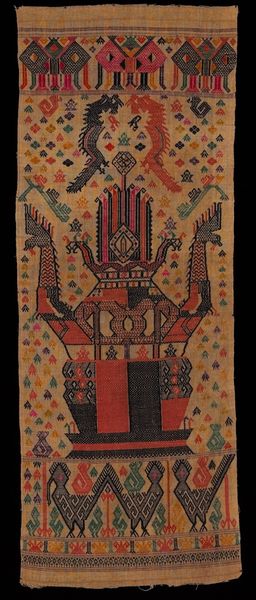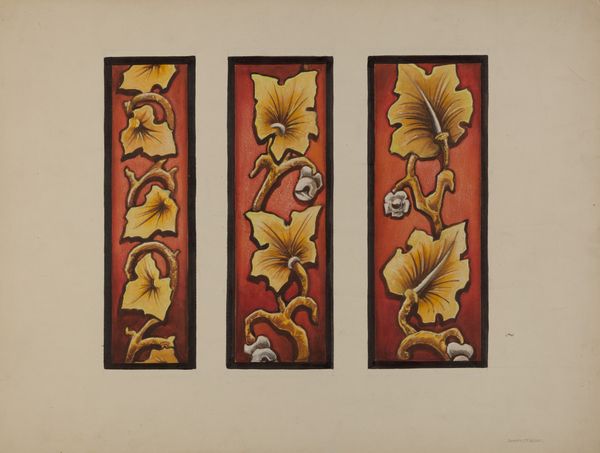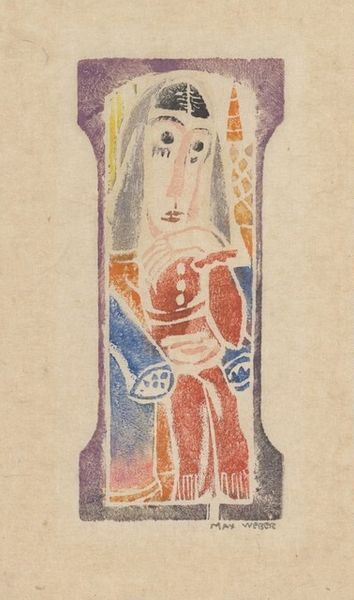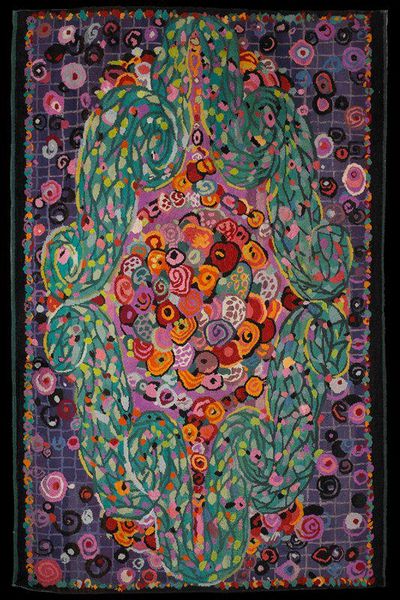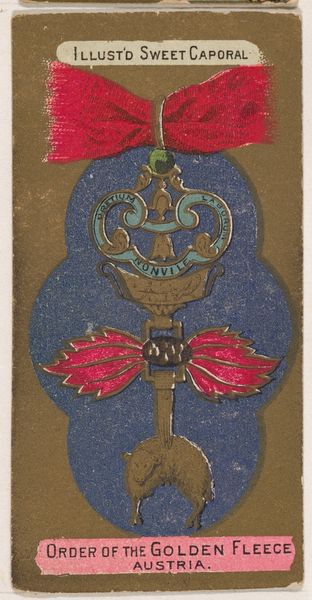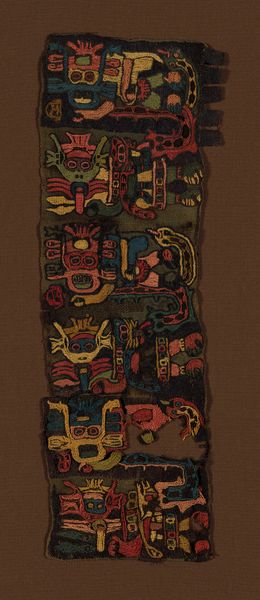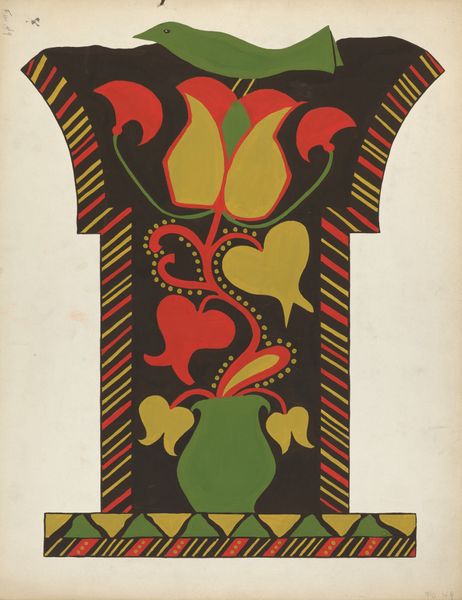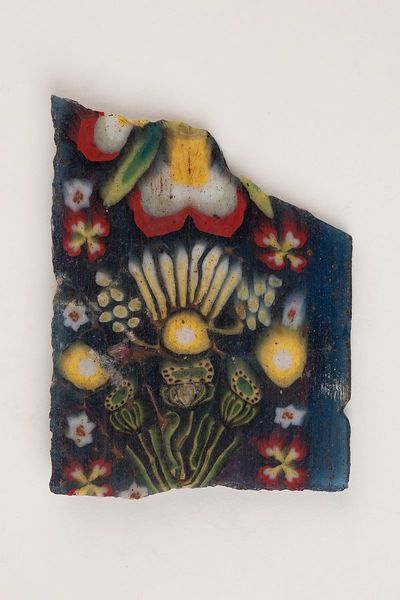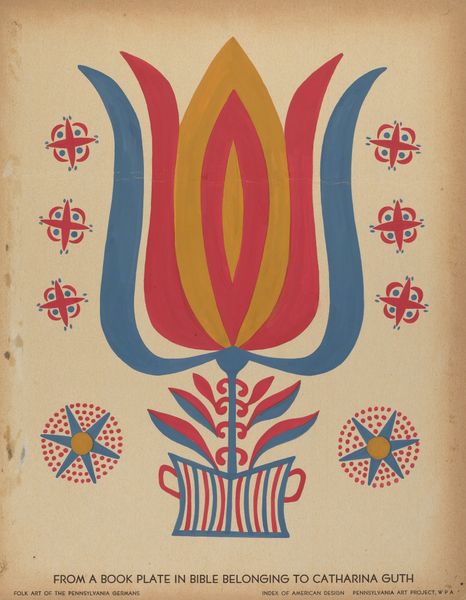
fibre-art, silk, textile, cotton
#
fibre-art
#
silk
#
pop art
#
textile
#
naïve-art
#
naive art
#
cotton
#
islamic-art
Dimensions: 22 1/2 x 12 in. (57.15 x 30.48 cm)
Copyright: Public Domain
Editor: This is Uuk kap Ilgich, a textile piece made of cotton and silk threads, dating from the late 19th to early 20th century. I’m struck by its vibrant, almost naive style and the repetition of these fantastical, symmetrical motifs. What do you see in this piece? Curator: What I find particularly compelling is how this textile embodies a visual assertion of identity and resistance. Consider the historical context: produced during a period of intense colonial pressures and cultural shifts in Central Asia. The piece is likely Lakai, given it now resides in the Minneapolis Institute of Art with other examples associated with the Lakai. It might have been commissioned or produced as an act of defiance of the dominant culture. Editor: Defiance? I wouldn't have guessed that from its appearance. Curator: Well, what seems decorative might actually be a coded language, a visual vocabulary used to preserve and communicate cultural knowledge under duress. Think about the deliberate use of bright colours, the symmetrical patterns – these choices could represent a conscious effort to maintain distinctiveness in a rapidly changing world. Do you notice how, despite the symmetry, there's a kind of playful irregularity to each motif? Editor: Now that you mention it, I do. It almost feels like deliberate imperfections. Curator: Exactly. These could be subtle acts of agency, a way of resisting complete assimilation. Perhaps also serving as symbolic protection? These objects might be considered empowered in their cultural setting. This artwork offers us a tangible glimpse into the ways marginalized communities asserted their existence. Editor: It's amazing how much deeper the meaning can be than just aesthetics. It’s a testament to the power of art as a form of cultural resistance. Curator: Precisely. And by exploring these works through the lens of cultural history, we start seeing them not just as objects but as potent assertions of selfhood.
Comments
No comments
Be the first to comment and join the conversation on the ultimate creative platform.
